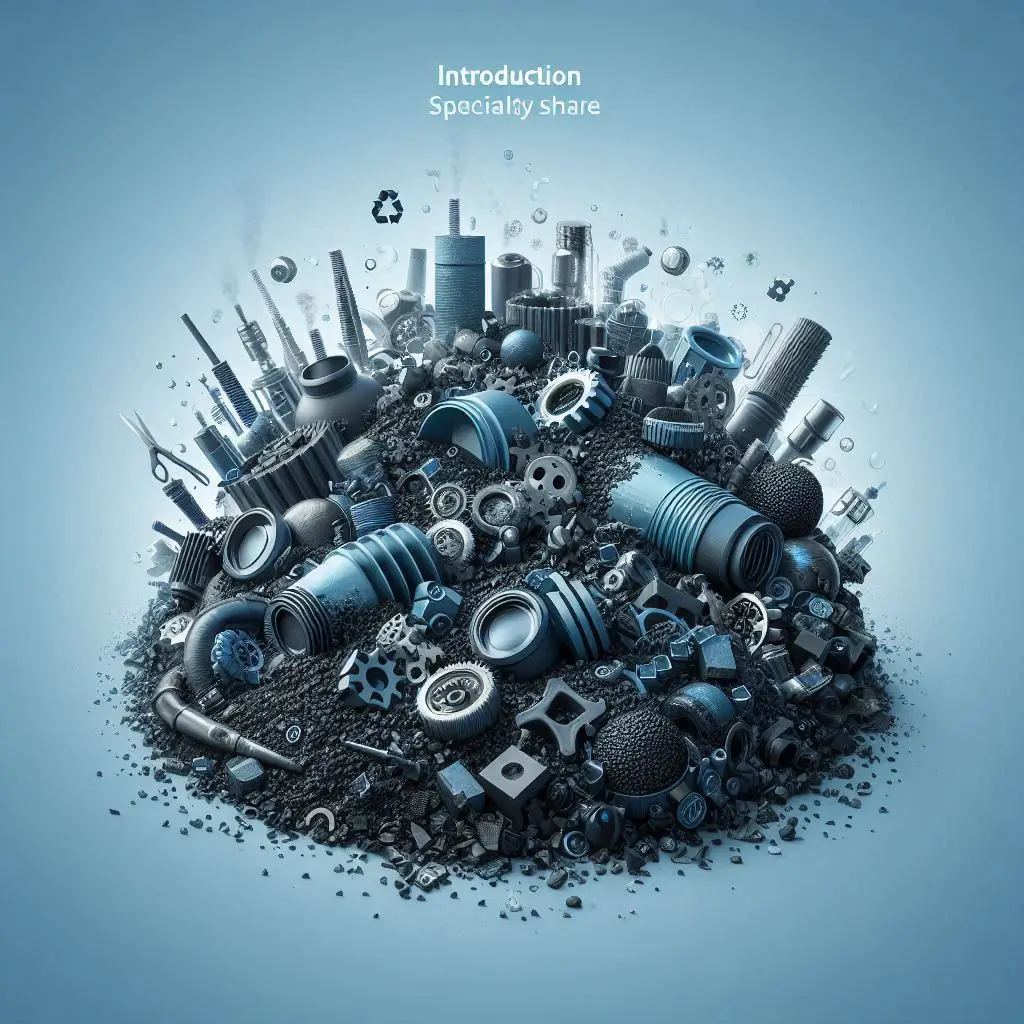
Recovered carbon black market size specialty share
Introduction
The global demand for sustainable solutions has significantly influenced the growth of the recovered carbon black (rCB) market. Driven by stringent environmental regulations and the need for eco-friendly alternatives, rCB has emerged as a viable and cost-effective option. Its role in reducing carbon emissions and contributing to the circular economy is substantial. This article delves into the dynamics of the recovered carbon black market, its size, specialty share, and the key factors driving its growth.
Recovered Carbon Black Market
The recovered carbon black market has witnessed notable expansion due to increasing demand across various industries. Produced through the pyrolysis of end-of-life tires, rCB plays a crucial role in conserving resources and minimizing environmental pollution. Its benefits, including lower production costs, reduced carbon footprint, and comparable performance to virgin carbon black, have made it a preferred choice for manufacturers.
A major driver of rCB's market growth is the heightened awareness surrounding sustainability and the circular economy. Industries are increasingly adopting environmentally friendly practices, with rCB being a significant contributor. Its applications in coatings, rubber products, plastics, and tires provide a sustainable alternative, reducing the use of non-renewable resources and lowering carbon emissions.
Global regulatory frameworks have also bolstered the demand for rCB. Governments are implementing policies to encourage recycling and reduce carbon footprints. As a result, many companies are shifting towards rCB to comply with these regulations. Technological advancements in the pyrolysis process have further enhanced the quality and consistency of rCB, making it suitable for diverse applications and opening new business opportunities.
Carbon Black Market Size
The carbon black market has demonstrated steady growth over the years, driven by its widespread applications in industries such as printing inks, plastics, rubber manufacturing, and automotive. Carbon black, a fine black powder, is primarily produced through the partial combustion of hydrocarbons. Its primary uses include serving as a pigment, reinforcing agent, and UV stabilizer.
The growth of the carbon black market is significantly influenced by the rising demand for tires, particularly in emerging economies. Carbon black enhances the strength, performance, and durability of tires, making it indispensable in the automotive sector. Additionally, the increasing use of plastics in construction, packaging, and automotive industries has fueled demand for carbon black. It imparts color, enhances UV resistance, and improves the aesthetic appeal of plastic products.
However, the market faces challenges such as fluctuating raw material prices and environmental concerns associated with carbon black production. In response, manufacturers are investing in research and development to explore alternative feedstocks and sustainable manufacturing processes, aiming to minimize environmental impact while ensuring market growth.
Specialty Carbon Black Market
The specialty carbon black market has experienced rapid expansion, primarily due to its diverse applications across multiple sectors. Specialty carbon black, characterized by its refined properties, is designed for specific applications that require unique qualities such as high conductivity, durability, and UV resistance.
One of the key drivers for this market is the demand for high-performance rubber products. Specialty carbon black is widely used in the production of industrial rubber goods, luxury tires, and conveyor belts. Its properties, including superior abrasion resistance and electrical conductivity, make it essential for these applications.
Furthermore, the use of specialty carbon black in plastics, coatings, and inks has contributed to market growth. In plastics, it acts as a UV stabilizer and pigment, enhancing product durability and appearance. In the coatings sector, it improves color strength, gloss, and UV protection. Additionally, specialty carbon black is used in the production of conductive inks for electronic applications, supporting advancements in the electronics industry.
The growing need for specialty carbon black in energy storage solutions, such as lithium-ion batteries and supercapacitors, further drives the market. Ongoing research and technological advancements are expected to expand the application scope, offering new growth opportunities for manufacturers.
Carbon Black Market Share
The carbon black market holds a significant share across various industrial sectors. It plays a crucial role in enhancing the strength, durability, and aesthetic appeal of products in industries such as automotive, plastics, coatings, and inks.
In the tire manufacturing sector, carbon black is an essential reinforcing agent, contributing to tire longevity and performance. This sector commands a substantial share of the global carbon black market. Similarly, the automotive industry heavily relies on carbon black for producing essential components like seals, hoses, and gaskets. It also improves the UV resistance and aesthetic quality of automotive plastics.
The plastics sector is another major contributor to carbon black market share. Used as a pigment and UV stabilizer, carbon black enhances the color and resilience of plastic products. It is extensively applied in construction, packaging, and consumer goods. The coatings and printing inks industries also utilize carbon black for its pigmenting and stabilizing properties, ensuring product quality and longevity.
Emerging economies, particularly in the Asia-Pacific region, are witnessing significant growth in the carbon black market. Rapid industrialization, urbanization, and the expansion of the automotive sector in countries like China and India are key contributors. This trend is expected to continue, reinforcing the market's global presence.
Conclusion
The recovered carbon black market is on an upward trajectory, propelled by environmental regulations, technological advancements, and increasing demand across multiple industries. Its contribution to sustainability, resource conservation, and carbon footprint reduction highlights its significance in modern industrial practices. Similarly, the broader carbon black market, including specialty applications, continues to expand, driven by its essential role in manufacturing, automotive, and electronics sectors. By embracing innovation and sustainable practices, industry players can harness significant growth opportunities in the evolving carbon black landscape.

